How To Improve Your Rowing Times And Get Super Fit In The Process
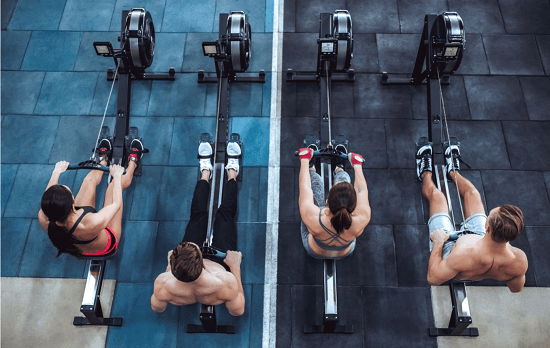
How To Improve Your Rowing Times And Get Super Fit In The Process
As you might suspect, greater performance or aerobic capacity in rowing will ultimately be improved by well, more rowing. Specificity plays a large role in the success of any sport or fitness endeavour.
That being said, the best training programs are those that create positive physical adaptations and the development or maintenance of learned skills for your required outcome goals. This often requires going beyond your primary training method and combining it with another.
More simply put, rowing alone should not be your only tool in the box.
For example, bodyweight training can be used for general athletic development. Thus this type of training can be beneficial to any sportsperson, athlete, or fitness enthusiast.
This article will discuss the training methods you should be implementing to help drive down your rowing times regardless of the distance. Did someone say 7 minute 2k?
But first…
Why You Should Row
If you are a regular rowing machine user then you don’t need to be convinced by the benefits. You can feel free to skip ahead to the good stuff.
But don’t think that if you are not a regular rowing machine user that you won’t be able to take action from this article. Heck, even if you have no interest in improving your rowing times and the closest you’ve been to a rower is in passing in the gym you’ll still come away with some new training methods to implement.
One reason why rowing is so great is that it provides a low-impact total body workout. This makes it a fantastic entry-level exercise for those newbies among you just looking to get fit. On the other hand, those looking for a more intense workout can benefit from the same machine as most rowers are designed to increase resistance levels based on your output. The faster or harder you row, the higher the resistance will be.
Learn more here: History Of The Rowing Machine
They are also the ideal machine for weightloss and weight control. Rowing machines are very effective fat burners, especially when compared to other exercise machines.
They are also more versatile then you may think. There are many ways you can use a rowing machine to not only address various aspects of your fitness but also to ensure that your workouts never become boring.
Slow-duration cardio, interval training, and fast-paced aerobic, fat-burning training are all possible on a rowing machine.
Most gyms have rowing machines and you can learn the technique relatively quickly on your own. The alternative would be to purchase your own machine and train from home.
For an easy how-to on rowing technique, check out this guide from Start Rowing.
So if you’re looking for a way to get super fit, reduce your body fat percentage, or even just a new physical challenge then you can apply the following training principles to your workouts.
Strength Training

Most people looking to get fit will use some form of resistance training as part of their program. Whether it’s used continuously or periodically throughout their training cycles will depend on the demands, their intentions, and fitness goals.
The benefits of building strength are obvious but in terms of rowing ability there are several key adaptations:
- Reduce injury risk: Rowing is repetitive and RSI (repetitive stress injuries) are common. Increasing your strength will increase the strength of your bones, joints, tendons, and ligaments and thus reduce the chances of injury.
- Increase muscle mass: Training for hypertrophy is often desired in individuals looking to get fit but the truth is strong trained muscles will produce an increase in muscle mass in an individual if they were previously untrained. Benefits include the reduction of muscle fatigue, muscles less susceptible to injury, increase power generation per rowing stroke, and an increase in muscular endurance.
- Increase joint flexibility: Unlike most other cardio machines, rowing requires a great deal of flexibility. Being more mobile will improve your rowing technique, allowing you to row more efficiently and therefore increase your stroke rate.
- Regulate body fat: Strength training is one of the best training methods you can use to help reduce body fat. Rowing is also a fantastic fat burner, so you will be doubling your efforts when combined with strength training. As an added bonus, leaner individuals will perform better and use their energy more efficiently.
But to what extent do you need to be strong? How much strength is needed for optimal rowing performance?
This really comes down to individual physiology as well as your training goals. Take the world’s strongest man Brain Shaw, for example, he broke the 100m rowing record without even training for it just because he was so strong. But this level of strength, albeit impressive is unnecessary for most.
It’s more likely that you’re interested in becoming more energy-efficient, increasing your competitiveness, improving your endurance, or overall fitness levels, in which case strongman training isn’t recommended.
It’s difficult to pinpoint the level of strength needed for optimal performance of every individual. What we can say for sure is that a certain level is needed. The way to contextualize this would be to monitor your progress over time.
One way would be to monitor your 2k row time. If your 2k time goes down as your strength increase then you should be looking to continue to improve your strength gains. If your rowing ability starts to decline or you 2k time increases as your strength levels increase (which can happen) then you can assume your levels of strength are becoming detrimental to your rowing and should be reduced.
Body Weight Training
Bodyweight training can be used effectively in combination with rowing to improve rowing ability and generally just improve your overall level of fitness.
It can be used to increase and maintain strength and requires less manipulation of training variables than weight training. Successful strength maintenance whilst developing force output equates to faster rowing. Not to mention that this type of training offers more variety and reduced chances of exercise boredom.
This is not a debate about bodyweight training over weight training as both can be used successfully. Weights are a fantastic way to way to increase your strength and can be used in combination with, or in replace of bodyweight exercises.
But also consider that strength training with weights is more stressful on the body. This is not an issue in itself but it does mean that longer recovery periods are required. This is time that could be spent on other aspects of your training such as technique, endurance, and mobility.
Bodyweight training also offers more directly transferable adaptations for rowing not just in the optimization of strength transfer but also in terms of mobility and stability.
Plus it’s super convenient. All you need is a floor to get going. If you have your own rower at home then you don’t even need to leave your home to complete your workouts. It can be that simple.
Training Types To Include
Plyometrics
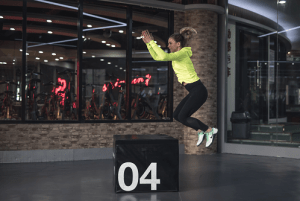
Plyometrics is a proven method to enhance rowing performance. It’s a great way to develop leg strength, explosive power, and increase the rate of force development. Training your fast-twitch muscle fibres in this way helps you produce faster movement. This is especially helpful on a rowing machine because you need to generate power from your legs to push off the footplates. The more power you can generate the higher intensity at which you’ll be able to row.
The key is to perform short bursts of explosive movements such as jumping, bounding, box jumps, and 1-legged hops. Levels of fatigue and injury risk are high so session length and training frequency should be kept low.
Circuits
Circuits are a fantastic way to implement variety into your programming. They provide an opportunity to increase strength, endurance, and flexibility with an abundance of exercises and timing variations to choose from.
This means it is very easy to incorporate progression. For example, you can increase the amount of exercises in your circuit, increase the amount of time either per exercise or for the overall workout, and also by reducing rest periods.
As with most things, it’s best to keep it simple. The 30-30-30 workout is effective and easy to implement anywhere. You train for a total of 30 minutes with 30 seconds on, followed by 30 seconds of rest. You can select as many exercises as you like and perform as many rounds as you can within the 30 minutes.
For example, you could choose 6 exercises which means you would complete 5 rounds in 30 minutes.
Key considerations:
- Make sure you have enough recovery time in between training sessions.
- If rowing on the same day as your resistance training try to implement exercises that are not heavily reliant on your legs.
- Rowing works almost all the major muscle groups in your body with the exception of chest and triceps. So include adequate chest and tricep exercises in your training. Push-up and dip variations should be your go-to. Tip: Use the rail of the rowing machine to perform dips and elevated push-ups if you have a rower at home.
- Once an exercise becomes easy, switch it for a more difficult version (push-up to explosive push-up for example) or change a training variable such as time. The goal is to create a progressive overload.
- Don’t just use strength exercises. Core exercises to maintain control and stability are vital to overall success.

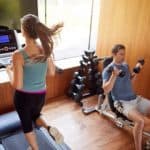
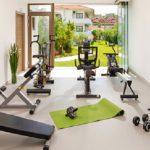

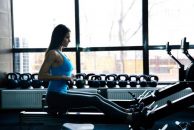
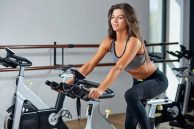

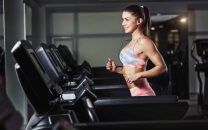
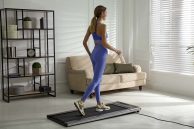
[…] data, the force curve, the bar chart, the large print, or a pacer. All this information helped me improve my rowing times and get fitter in the […]
[…] rowing machine is a great all in one solution to giving yourself a full-body workout. They can give a high-intensity workout that is also super effective for burning calories. In this […]